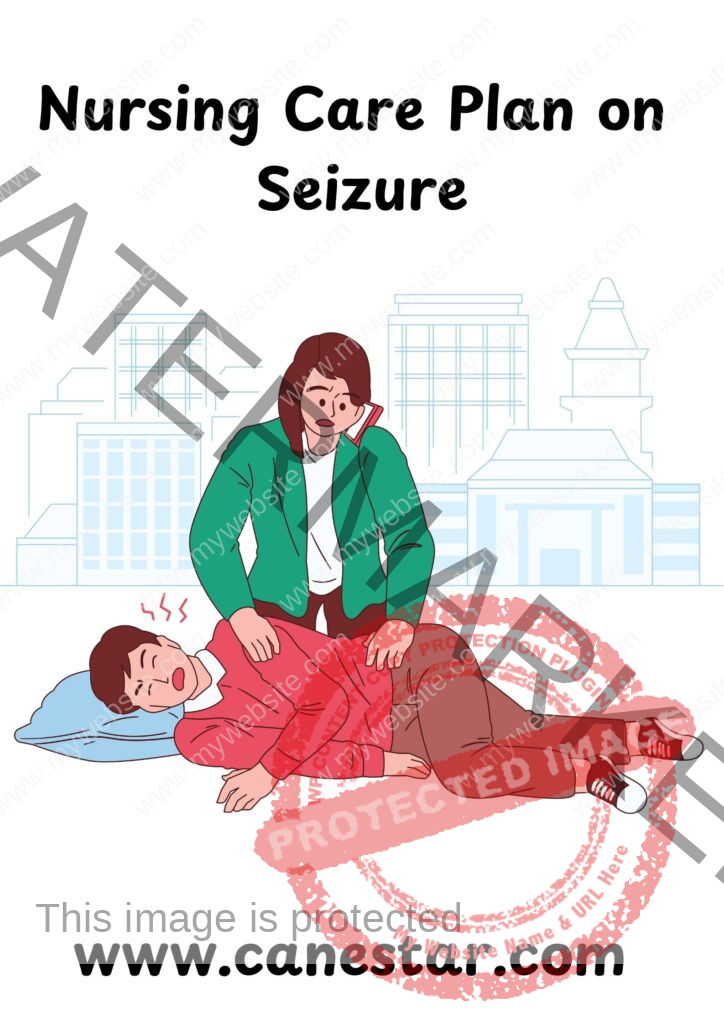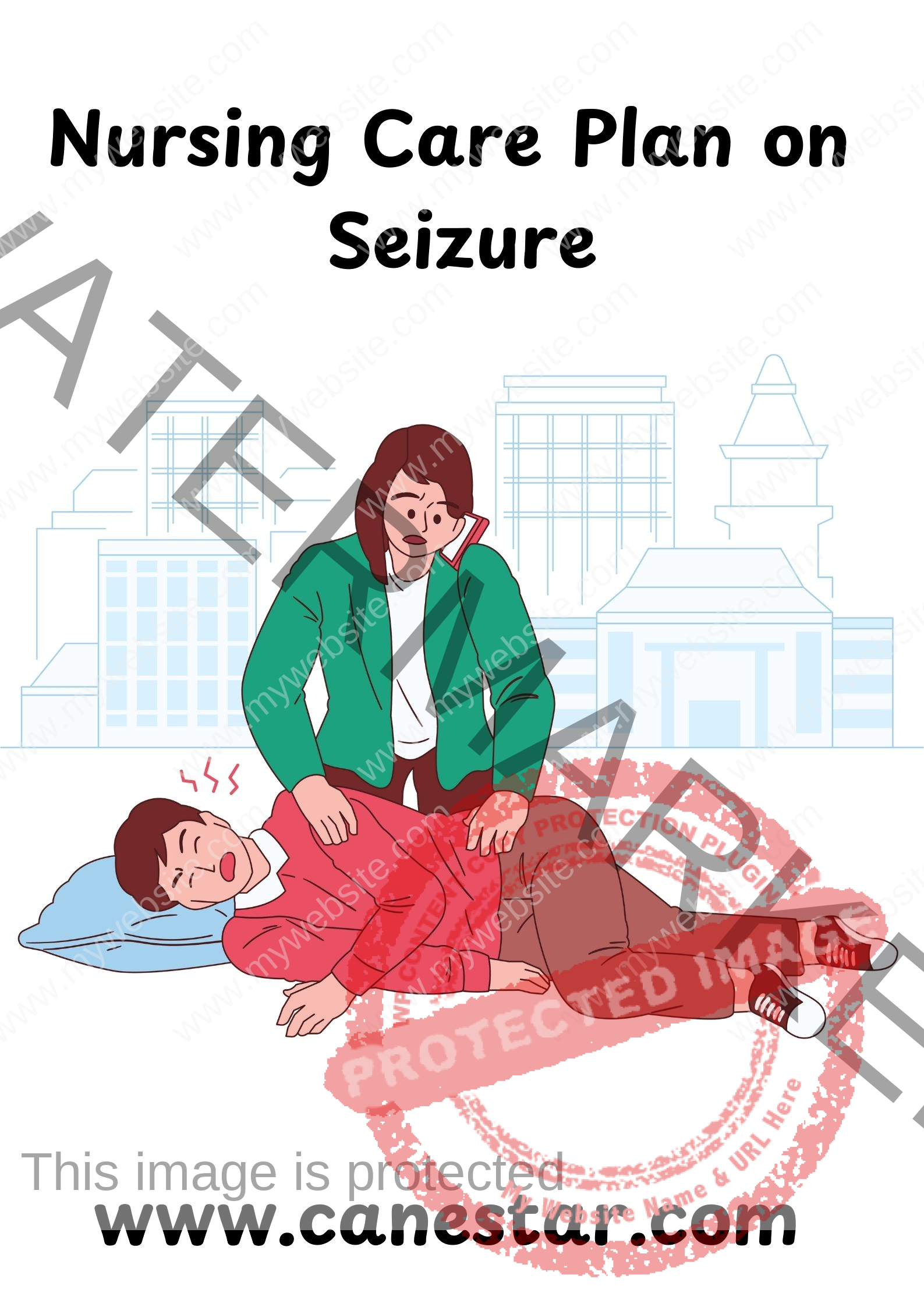NURSING CARE PLAN FOR SEIZURE
NURSING CARE PLAN ON SEIZURE
A seizure is a sudden, uncontrolled electrical disturbance in the brain. It can cause changes in behavior, movements, sensations, and levels of consciousness. Seizures vary from brief lapses of attention or muscle jerks to severe and prolonged convulsions.
Types of Seizures
Focal (Partial) Seizures:
- Simple Focal Seizures: Limited to one area of the brain, do not involve loss of consciousness.
- Complex Focal Seizures: Affect a larger area of the brain, may involve loss of consciousness or altered awareness.
Generalized Seizures:
- Absence Seizures (Petit Mal): Brief loss of awareness, often seen in children (staring spells).
- Tonic-Clonic Seizures (Grand Mal): Involves both stiffening (tonic) and jerking (clonic) of muscles; associated with loss of consciousness.
- Atonic Seizures: Sudden loss of muscle tone, leading to collapse.
- Myoclonic Seizures: Sudden brief jerks or twitches of muscles.
- Tonic Seizures: Muscle stiffness.
- Clonic Seizures: Repeated jerking movements.
Causes of Seizures
- Epilepsy: A chronic condition with recurrent seizures.
- Head injury
- Stroke
- Infections (e.g., meningitis, encephalitis)
- Brain tumors
- High fever (febrile seizures)
- Metabolic imbalances (e.g., low blood sugar, electrolyte imbalances)
- Drug or alcohol withdrawal
- Sleep deprivation
- Stress
- Genetic factors
Signs and Symptoms
- Pre-seizure (Aura): Sensations such as strange smells, tastes, or visual disturbances.
- During a seizure:
- Altered consciousness (e.g., confusion, staring, unresponsiveness)
- Jerking movements or convulsions
- Stiffening of muscles
- Loss of bladder or bowel control
- Unusual sensations (e.g., tingling, dizziness)
- Post-seizure (Postictal state): Confusion, fatigue, headache, or drowsiness.
Nursing Care Plan for Seizure
Assessment
- Subjective Data:
- Reports of an aura before seizure (if applicable)
- Anxiety or fear expressed by the patient or family members
- Objective Data:
- Altered consciousness during seizure episodes
- Muscle stiffness, jerking, or convulsions
- Loss of bladder or bowel control during seizures
- Vital signs fluctuations: increased heart rate, respiratory rate
- Postictal confusion or drowsiness
Nursing Diagnoses
- Risk for injury related to seizure activity.
- Ineffective airway clearance related to neuromuscular impairment during seizure activity.
- Risk for aspiration related to loss of protective airway reflexes during seizure.
- Fear/anxiety related to the unpredictable nature of seizure occurrence.
- Deficient knowledge regarding seizure disorder and management.
Goal/Expected Outcomes
- Patient will remain free from injury during seizure episodes.
- Patient’s airway will remain patent during and after seizure activity.
- Patient and family will demonstrate an understanding of seizure precautions and management.
- Patient will demonstrate reduced anxiety levels by understanding seizure triggers and safety measures.
Nursing Interventions and Rationales
Monitor seizure activity (onset, duration, type of movements, loss of consciousness):
- Rationale: Provides baseline data to help identify the type of seizure and effectiveness of interventions.
Maintain safety during seizure episodes:
- Action: Protect the head with a soft object, loosen tight clothing, and move objects away.
- Rationale: Prevents injury from uncontrolled movements.
Do not restrain the patient during the seizure.
- Rationale: Restraining may lead to further injury.
Position the patient on their side if possible during seizure activity.
- Rationale: Helps maintain airway patency and reduces the risk of aspiration.
Suction equipment should be ready at the bedside.
- Rationale: Ensures immediate airway clearance if needed.
- Monitor postictal phase (confusion, drowsiness, muscle soreness).
- Rationale: Provides data for assessing recovery and identifying the need for further interventions.
Administer prescribed anti-seizure medications as ordered.
- Rationale: To control or prevent seizures.
Educate patient and family about seizure triggers (e.g., stress, sleep deprivation, flashing lights).
- Rationale: Identifying and avoiding triggers can reduce seizure frequency.
Provide emotional support to the patient and family.
- Rationale: Seizure disorders can cause fear and anxiety; offering support helps ease emotional distress.
Teach family seizure first aid:
- Place the patient in a safe position
- Time the seizure
- When to call emergency services.
- Rationale: Ensures family members can safely assist the patient during and after a seizure.
Evaluation
- The patient will remain free from injury during seizures.
- Airway patency will be maintained during and after seizures.
- The patient and family will demonstrate an understanding of seizure precautions.
- The patient’s anxiety will be reduced by learning coping strategies.


